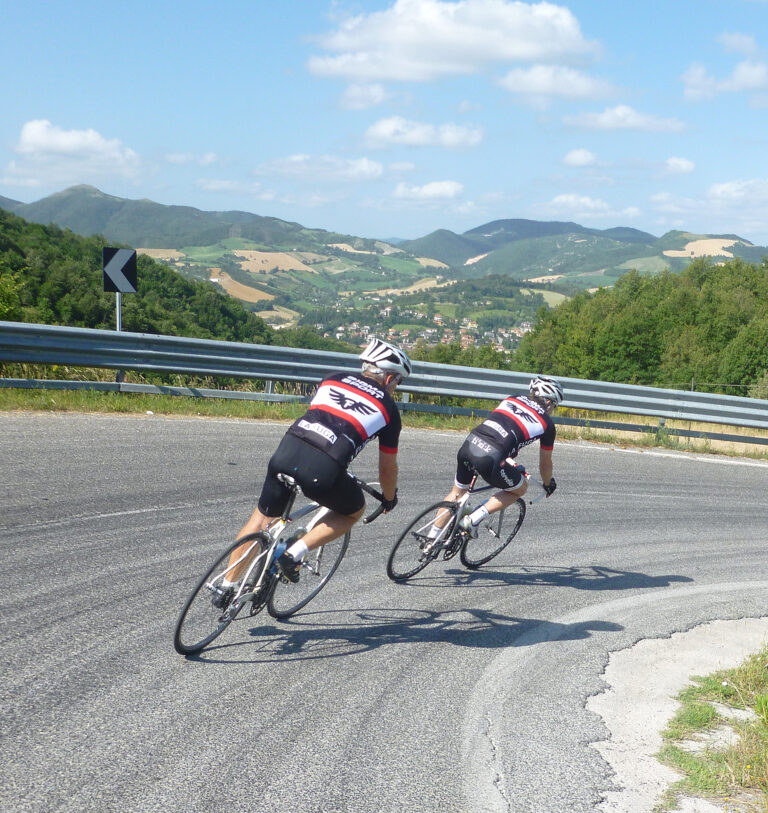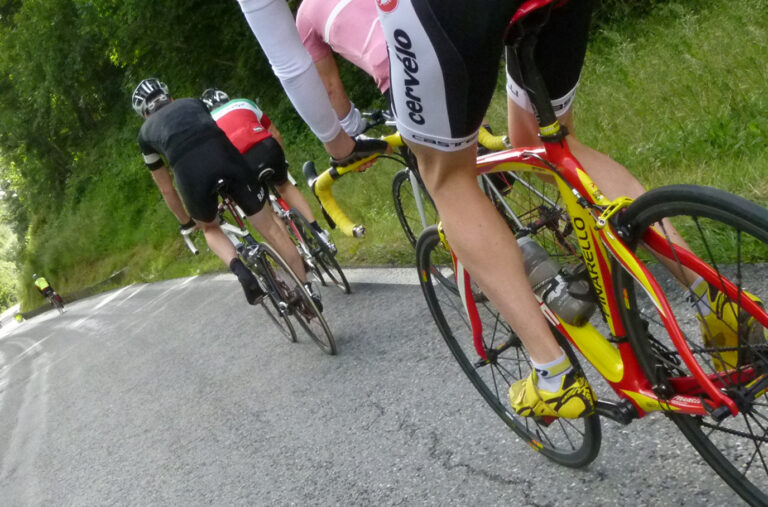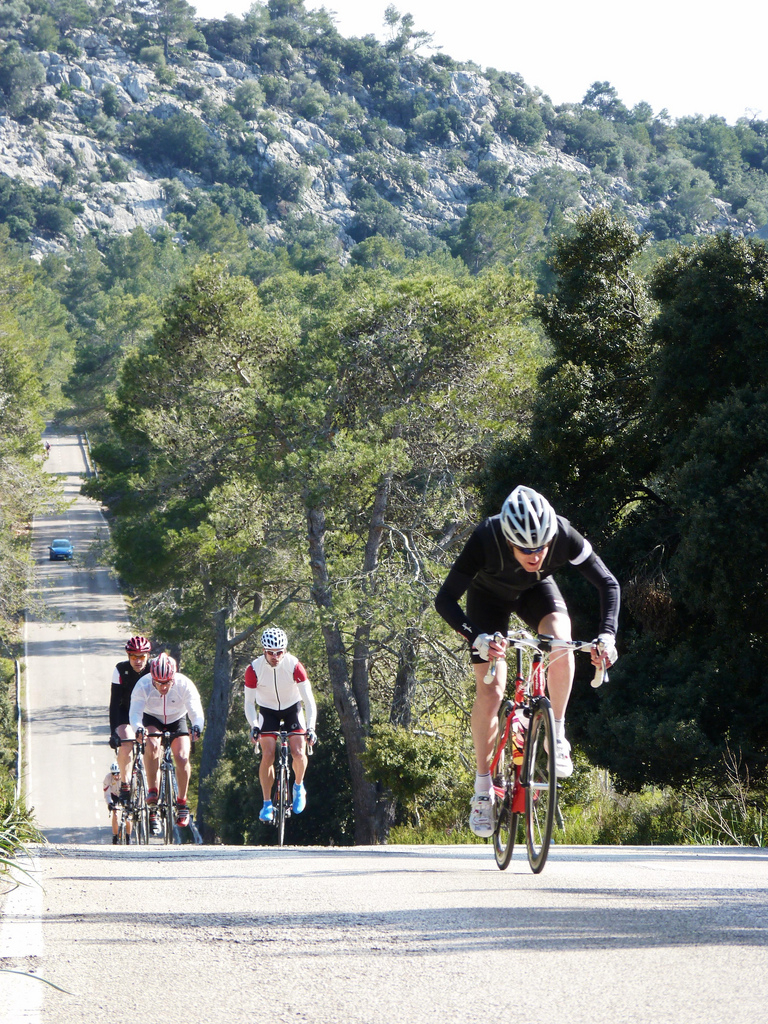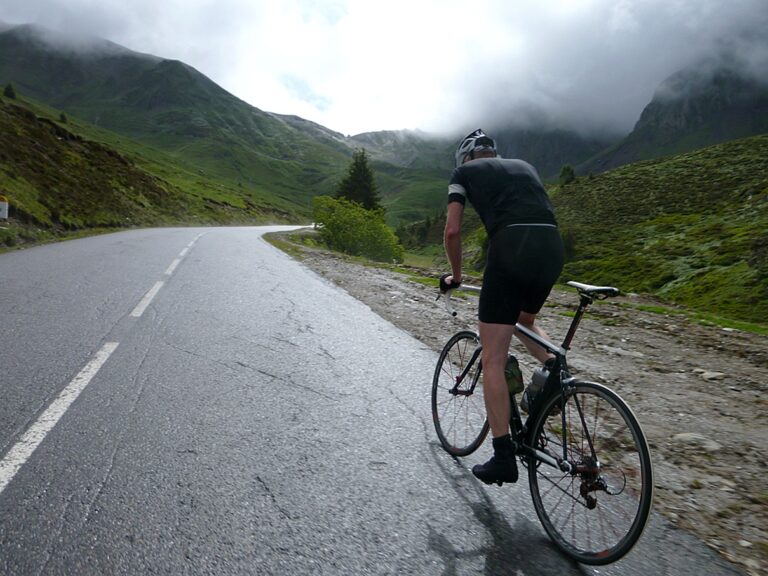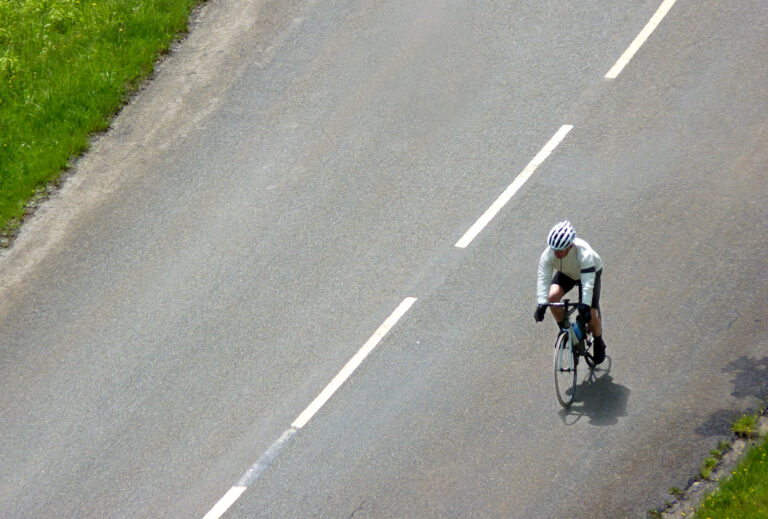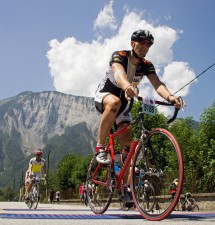
Last week we looked at how you might best be able to schedule a structured training programme by creating a lifestyle audit. Using a rider with a maximum of 10 hours training time as an example, we came up with the 12-week progression, which you can see here.
Having decided on the amount of hours available to you week-by-week, you now need to decide how best to use the available time in order to achieve your goal, which is to complete a 100 mile sportive.
So what elements do you need to fit into your week’s training? Think back to the point at which you identified the key demands of the sportive and you’ll recall that it’s a combination of good aerobic endurance plus a number of technical elements such as good bike handling for descents, group riding ability and climbing skills. So your training programme should reflect this and target these key areas.
Aim to complete the distance
As the aim of any endurance event is to be able to complete the distance, your first task is to build up sufficient aerobic fitness to be able to ride 100 miles. Target the distance first and speed second. Given your ultimate goal, there’s no point in being able to complete the first 20 miles at an impressively high speed if you then completely fall apart and pull out before the half way point. Get the distance first; then we’ll start working on how to complete it faster.
Looking at our training intensity diagram , you can see that the areas which most benefit your ability as a sportive rider exist in the lower zones, particularly Zones 2 and 3. This is where you see phrases like ‘building good endurance base’ ‘Improving efficiency’ ‘conditioning muscles and tendons for the demands of cycling’ and so on, all the things which you need to develop as a sportive rider. So this is the area where you need to concentrate most of your attention at the start of the programme. As you can see this kind of training is done at a relatively ‘easy’ pace, starting at around 60% of your max heart rate (MHR) and rising to about 80% at the top of Zone 3. This is comparable to a low rate of perceived exertion or, in other words, you should feel like you’re not working very hard at this kind of training intensity.
“Soon I’ll be flying”
“That’s easy”, I hear you say; “I can do all my riding at a very easy pace and soon I’ll be flying round the 100 mile sportive.” Unfortunately not. As we mentioned earlier in the series, the set of rules which govern your training improvements, called the principles of conditioning, mean that in order to see improvements you need to overload and progress your training intensity in order to see adaptations. In other words, in order to get better, you have to work harder to keep improving. Fortunately this is a good thing insofar as it makes the training more interesting and is far more specific to the demands of a sportive, because while you could undoubtedly develop a fairly decent, sustainable pace on the flat by doing considerable amounts of training in Zone 2, as soon as you were confronted by some of the amazing hills that sportive organisers like to incorporate into their events, you’d find things rather more of a struggle.
Another key point is that many of the technical demands you need to work on, such as descending and group riding skills, can be done during your low intensity rides. This also makes the hours in the saddle more productive and more interesting.
So a typical 10-hour training week might incorporate eight hours of aerobic endurance work including two hours’ technical skills development, plus an hour or so of harder intensity and some core strength and flexibility exercises. When you break that down even further and fit it into our fairly typical progression based on a rider aiming to build to 10 hours training per week, the first week of the programme might look like this:
Week 1 total training time: 6 hours
Monday – 1 hour @ Zone 2
Wednesday – 1 hour core strength and flexibility exercises
Friday – 1 hour @ Zone 2
Saturday – 3 hours @ Zone 2 group ride with zone 3 efforts
Not a bad start insofar as it goes but it’s not very exciting, doesn’t address the need to work slightly harder to see adaptations and doesn’t take into account the technical elements we identified as being key to good sportive performance. So let’s look instead at the bigger picture, taking into consideration the first four-week training block, and then build in some goals and progressions.

This is far more interesting, varied and much more beneficial in training terms. You’re building some core strength and flexibility which, as well as developing your endurance and gradually integrating periods of harder effort into your rides, will help with the hours in the saddle endemic to sportives. You can also ride comfortably and efficiently in a group, which is one of the key skills for mass participation rides. So a pretty good start to a 12-week programme all-in-all.
Next week we’ll show you how to address the second four-week block and target higher cadence as well as targeting improved climbing performance.
Part 1: Going for Centuries
Part 2: Breaking down the barriers
Part 3: Goal Setting
Part 4: Intensity
Part 5: Get in the Zone
Part 6: Performance Testing
Part 7: Creating a training plan
Part 9: Be a better climber
About the author:
Huw Williams is a British Cycling Level 3 road and time trial coach. He has raced on and off road all over the world and completed all the major European sportives. He has written training and fitness articles for a wide number of UK and international cycling publications and websites and as head of La Fuga Performance, coaches a number of riders from enthusiastic novices to national standard racers.
Contact: [email protected]

